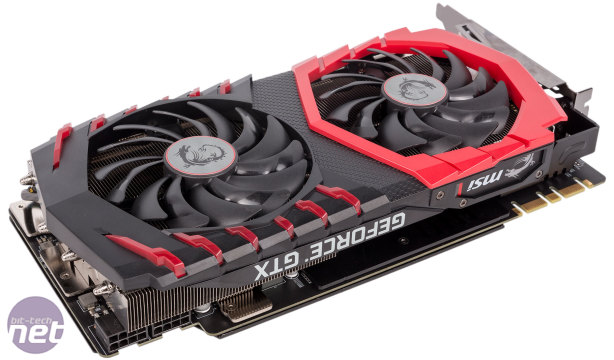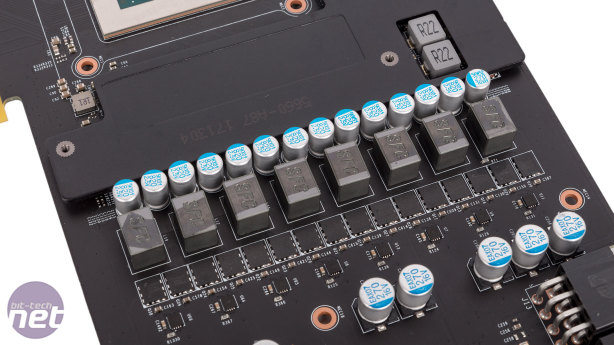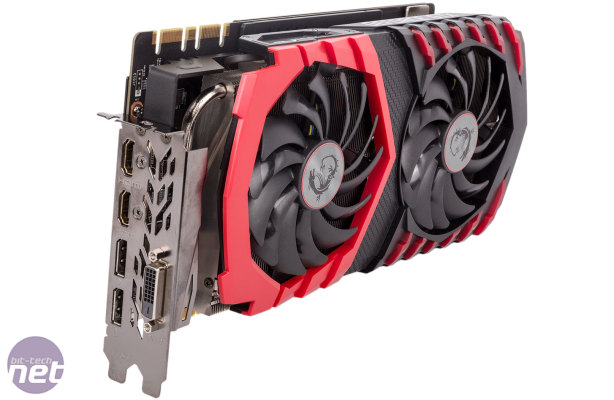
Performance Analysis
Given that it's the fastest card around, excluding the new Titan Xp, assessing GTX 1080 Ti performance is pretty easy: It's damn fast and will deliver smooth frame rates pretty much regardless of what you throw at it, at least up to and including 4K resolutions. Our Doom benchmark is currently not working properly (recording Vulkan results is never fun), so you won't find it here, but you can get an idea of how this card will perform by looking at the Aorus results here.While clock speeds do differ slightly from partner to partner, performance from any overclocked GTX 1080 Ti is going to be roughly the same, and there certainly won't be differences noticeable outside of recorded benchmarks. We've left the Aorus GTX 1080 Ti in the graphs as a comparison, and the two trade places for the top spot in most benchmarks or are simply equal. On average, this MSI card is a third quicker than an overclocked GTX 1080 too. As such, with no competition from AMD and excluding the Titan family, there's still really nothing that can touch the GTX 1080 Ti.
System power consumption of around 400W tallies with what we've seen from other partner cards, as does the delta T of 52°C – others have kept things below 50°C here, but it's not a big difference, and the MSI card stays quiet too. Fans reached a 57 percent PWM signal under sustained load, which translated into a speed of just under 1,500 RPM.
Clock speeds of this card fluctuate a little under load, but in the default Gaming Mode we most commonly saw 1,860MHz in games, and this increased to 1,873MHz in OC Mode, which you may as well use – we saw no increase in power consumption, temperature, or fan speed. Silent Mode, meanwhile, is here a waste of time, as you drop your clock speed to around 1,800MHz, but the fans and temperature remain the same as they are in the faster modes, so there's no benefit.
Overclocked, our core with an unleashed power limit and 80MHz extra set in Afterburner was running at 1,974MHz, a boost of over 100MHz or six percent. Coupled with the six percent memory speed increase, we observed gains typically around the five percent mark, so there's not much more to be squeezed from this card, it seems. It wasn't the most efficient overclock either, as system power consumption spiked by 60W, the GPU got about 2°C hotter, and the fan speed increased to 63 percent (about 1,650 RPM).
Conclusion
This is undoubtedly another awesome graphics card. The truth is that if you have £700-£800 to play with for a GPU upgrade, you're unlikely to be disappointed by whatever GTX 1080 Ti you happen to buy.The Gaming X is a tried and tested design, increased to a 2.5-slot form factor here in order to boost cooling potential. Is it a success? Yes – mostly. It's clearly powerful, and the cooler is effective, but we do have some qualms. It's not a true criticism, but we'd like have seen MSI be a bit more creative here, as there's nothing here we haven't seen before. There's still a lot of features that high-end gamers will enjoy, but the RGB lighting, for example, is better implemented in other designs, while internal HDMI ports or fan headers give competitors like Aorus and Asus (respectively) little unique edges. As such, we won't reach for our Exceptional award, but the MSI GTX 1080 Ti Gaming X 11G is still well deserving of our Extreme award, and if you have the dosh and happen to be particularly taken by the red and black design, we're sure you'll be more than happy with your purchase.


MSI MPG Velox 100R Chassis Review
October 14 2021 | 15:04











Want to comment? Please log in.